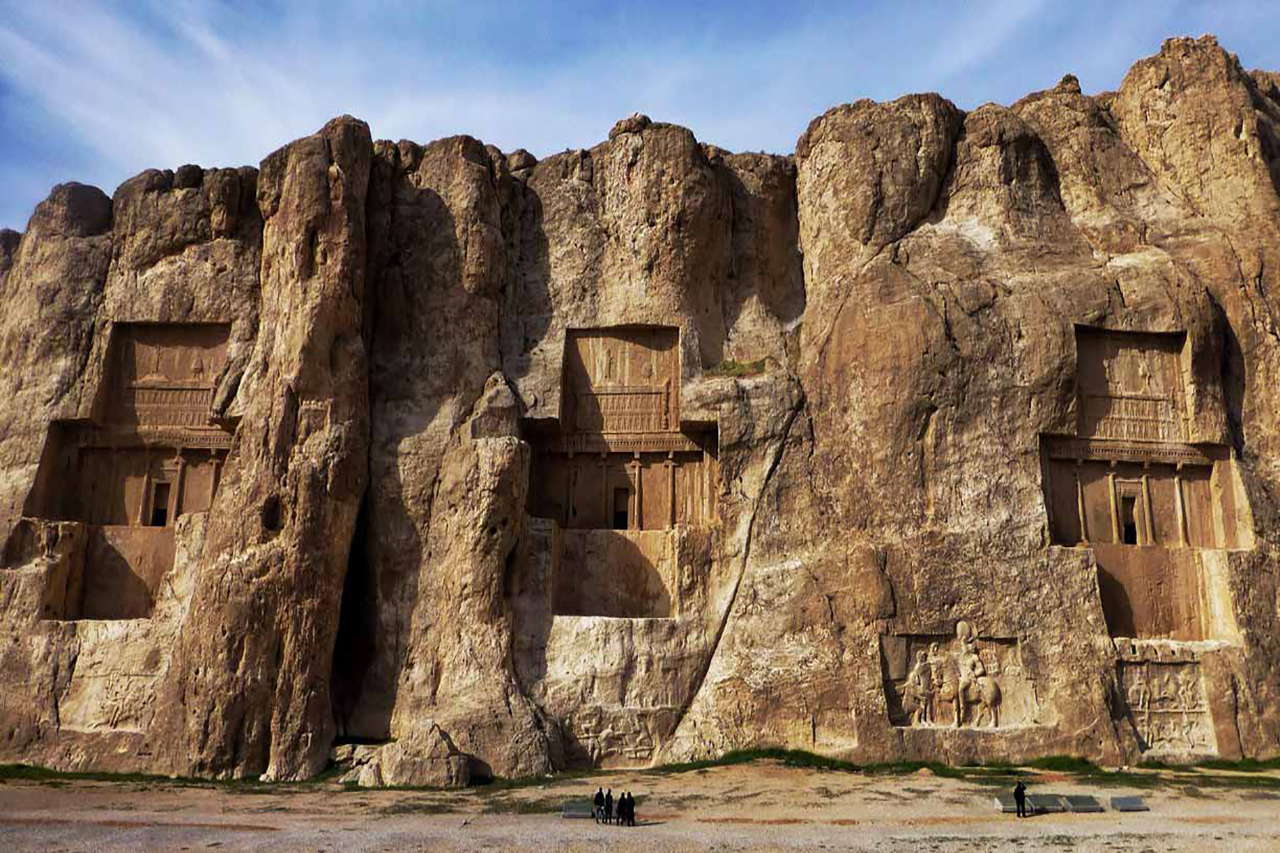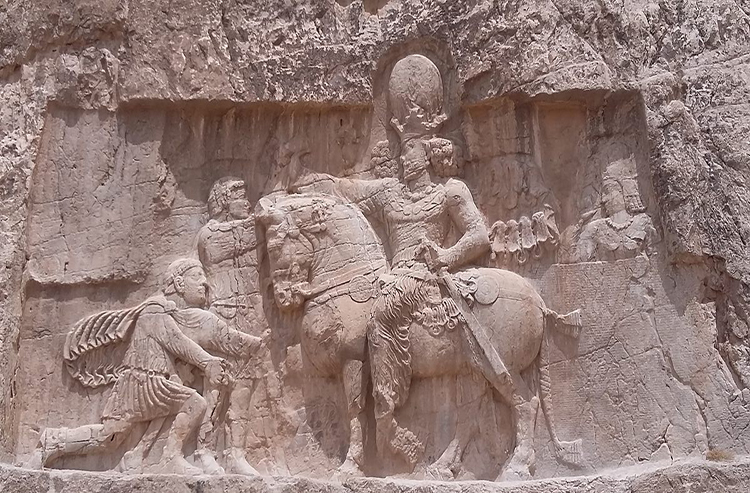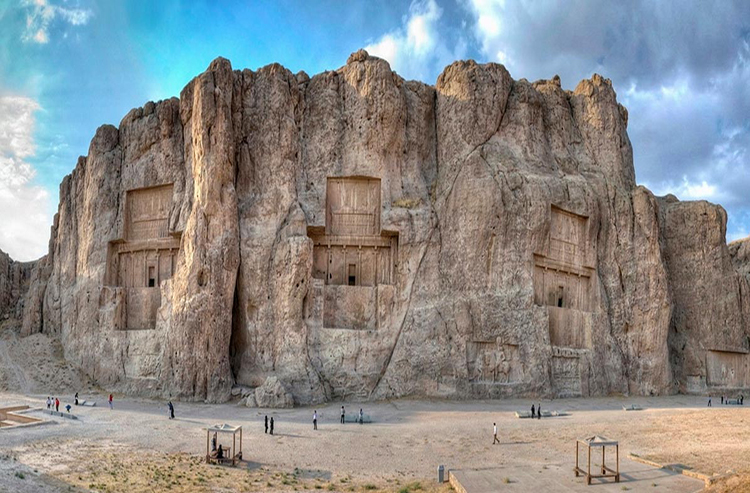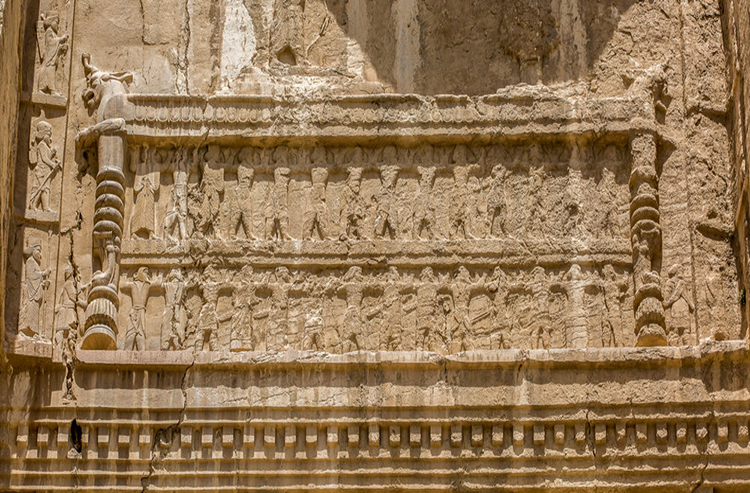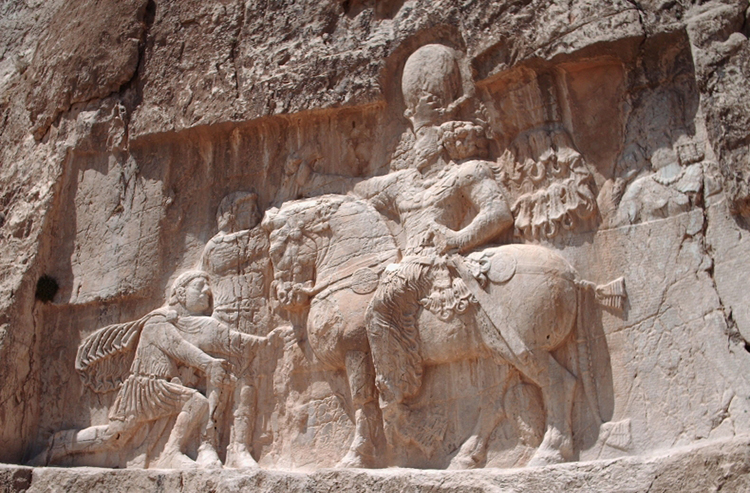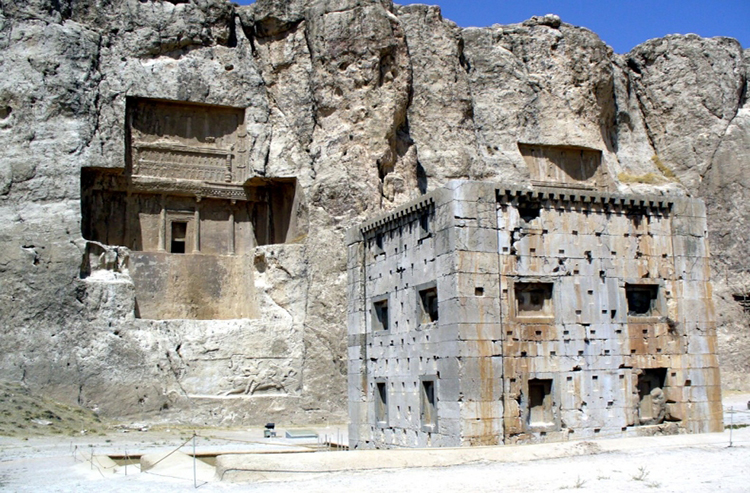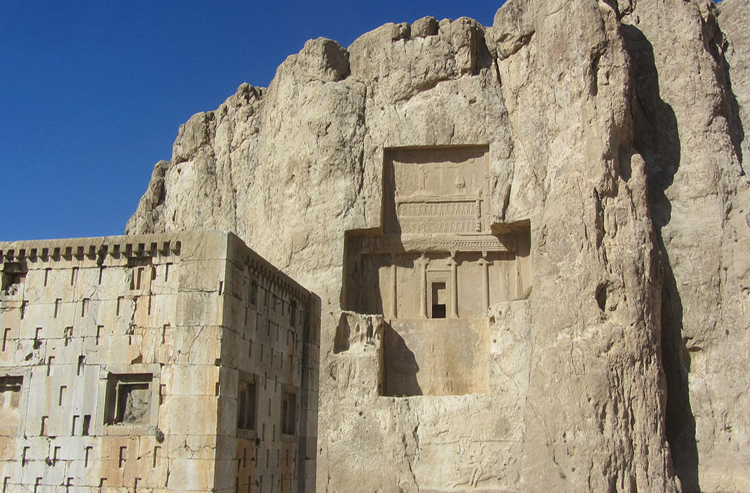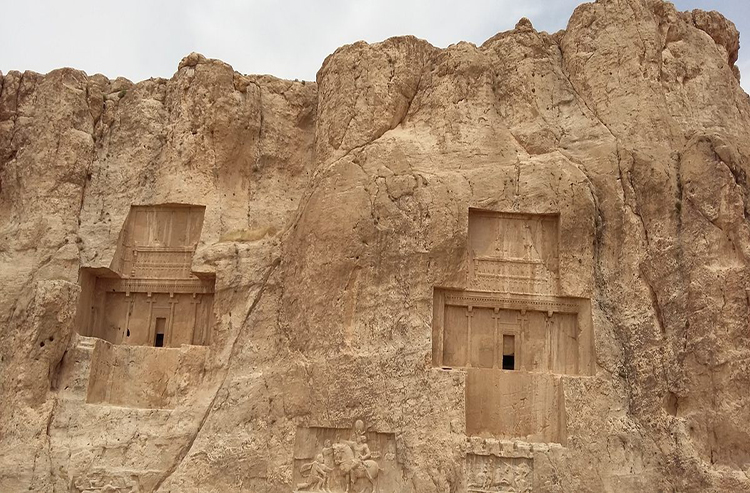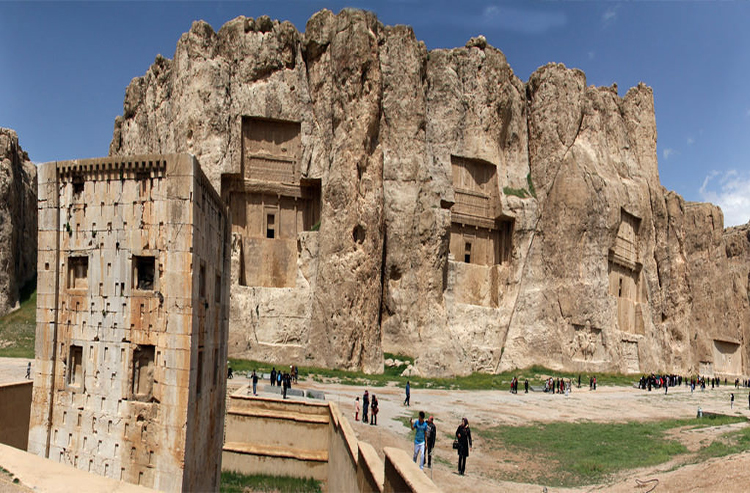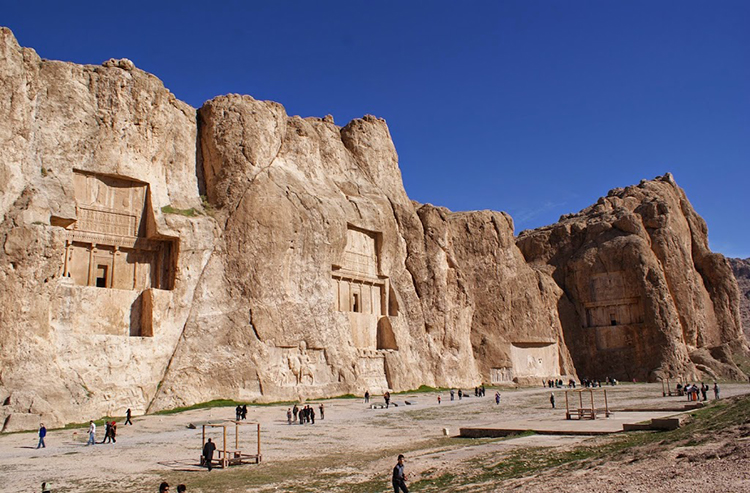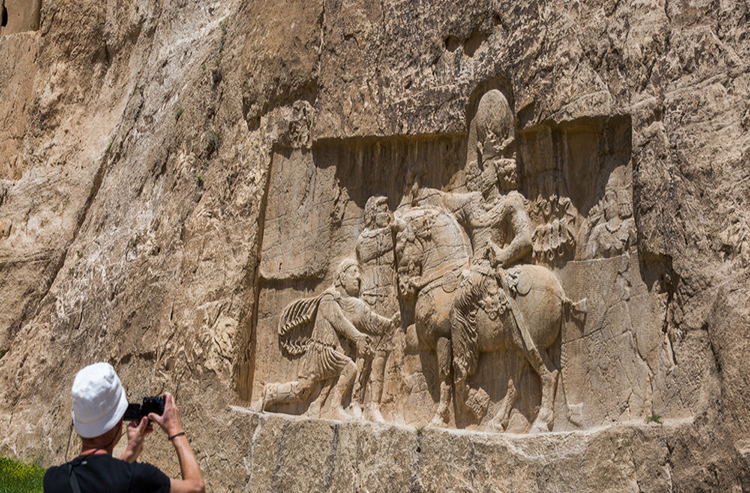Naqsh-e Rustam
Naqsh-e Rustam (meaning Throne of Rustam ) The ancient necropolis houses the immense rock-cut tombs of four Persian kings.
This is a historic site 3km away from Persepolis, which was first used in the 2nd millennium BC by Elamites for their rock reliefs. Four Achaemenian kings are buried here and several Sassanian rock reliefs are carved on the face of the mountains. A unique Achaemenian building is still standing in front of the perpendicular cliffs called Ka’abe-ye Zartosht (Zarathustra’s Cube).
Achaemenid Tombs
Naqsh-e- Rustam houses four rock tombs carved out of rock face. Since the façades of the four Achaemenian tombs look like Persian crosses- chalipa- some call it Persian Crosses as well. The entrance to each tomb is located at the center of the cross and it leads to a small chamber where the king’s body lay in a sarcophagus. It is not clear whether the bodies were directly put into the sarcophaguses or the bodies were exposed to a tower of silence, and then the bones were put there. What is certain is that the tombs were closed after the burial, but the doors were smashed and the tombs were looted after the invasion of Alexander the Great in the 4th BC.
Ka’ba-ye Zartosht
In front of the rock tombs, there is a square tower known as the Ka’ba-ye Zartosht that means the Cube of Zoroaster (Ka’ba is the famous monument as a holy site for Muslims located in Mecca). The structure of the building is a copy of a sister building at Pasargadae known as the Prison of Solomon; however, this building is a few decades older than Ka’ba-ye Zartosht. On the wall of the tower, there is an inscription in three languages from Sasanian time and it is considered as one of the most important inscriptions of that period. It is not obvious what the purpose of the building had been. It might have been a library for the holy books, a place to keep the holy fire, or maybe a treasury.
Why Is It Called Naqsh-e Rustam?
Sassanid reliefs mainly depict equestrian fights or investiture scenes. Since the equestrian fights of the Sasanian kings represent the tales of chivalry, locals believed that the man depicted on reliefs was Rustam, the hero of Shahnameh. The epic of Shahnameh is the masterpiece of Ferdowsi, the great Iranian poet of the 10th and 11th the century. Therefore, the site is called Naqsh-e Rustam (meaning the carvings of Rustam); because the locals believed that the carved man on the reliefs was their epic hero” Rustam”.
